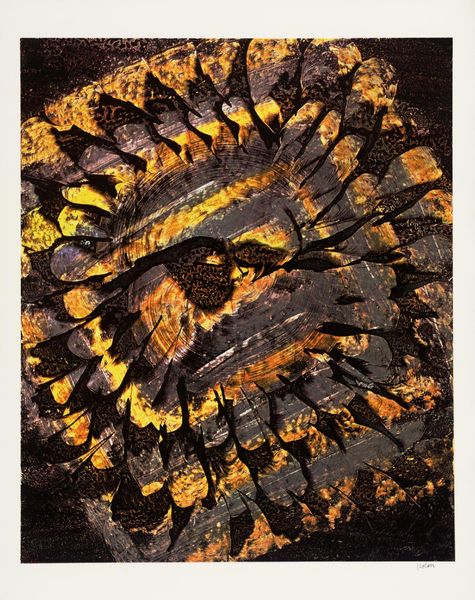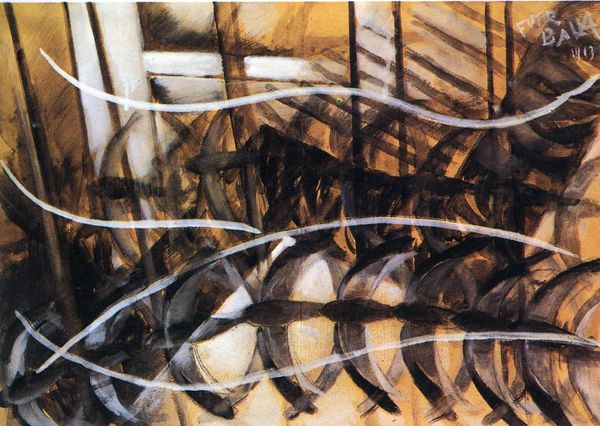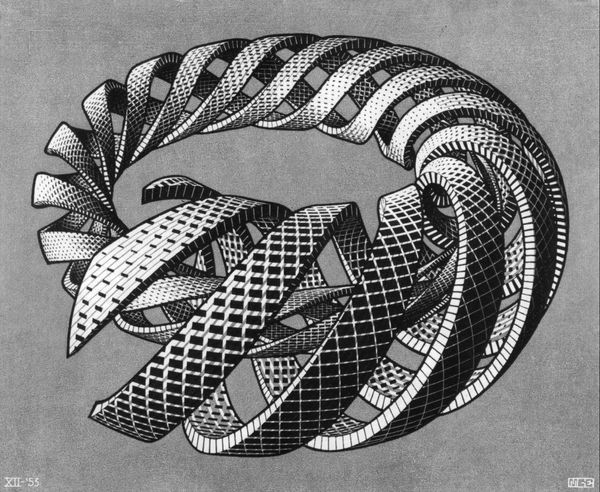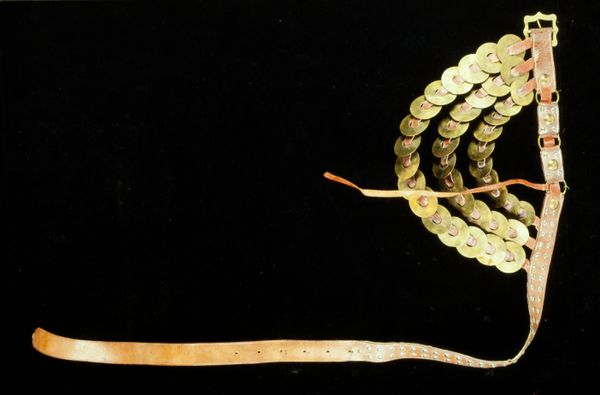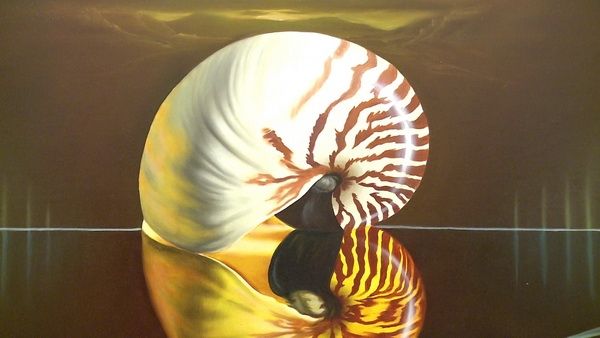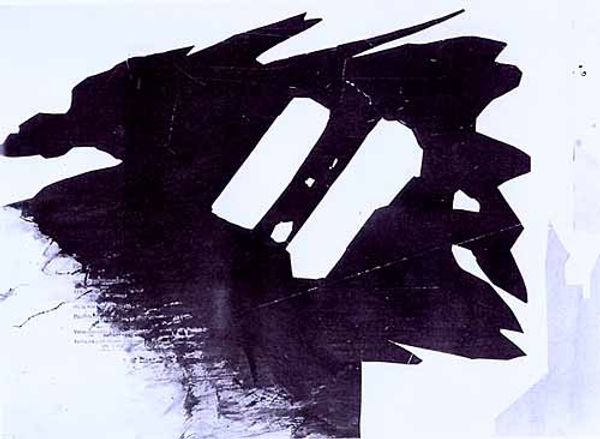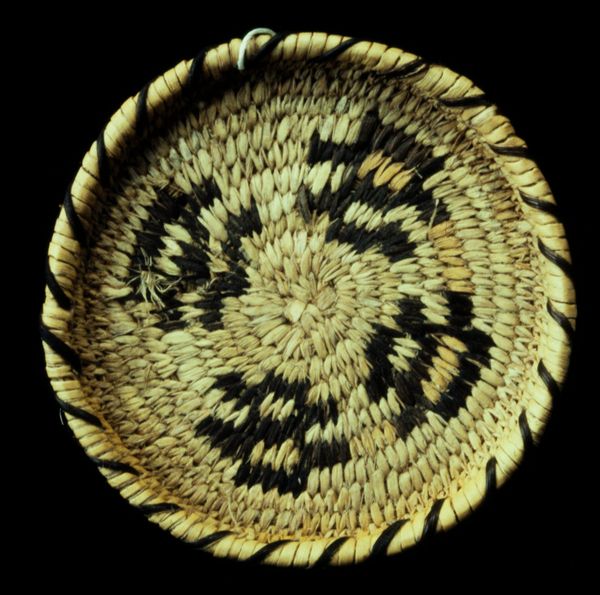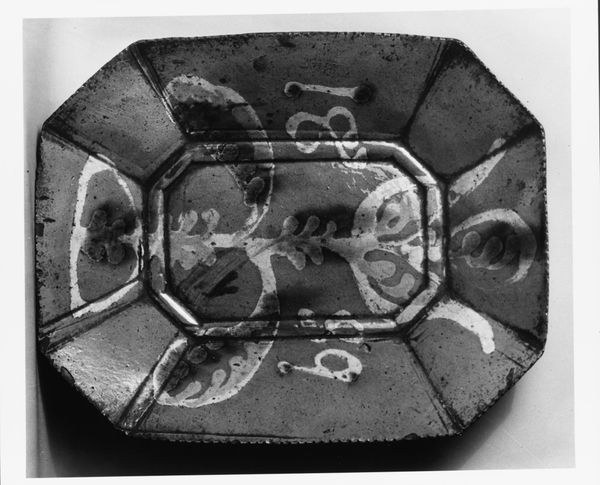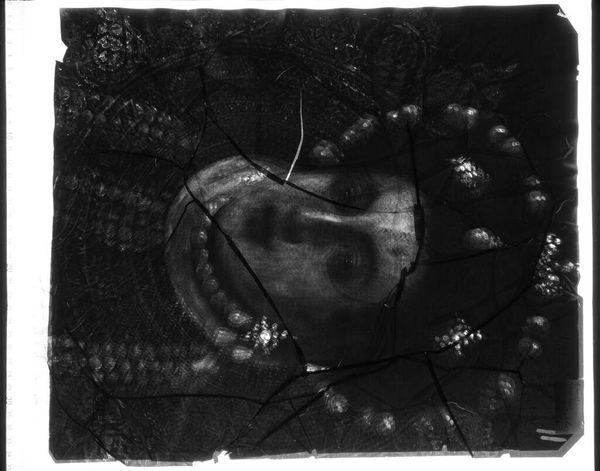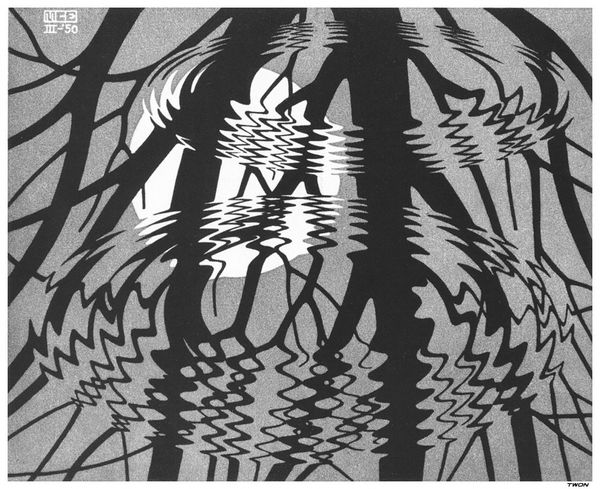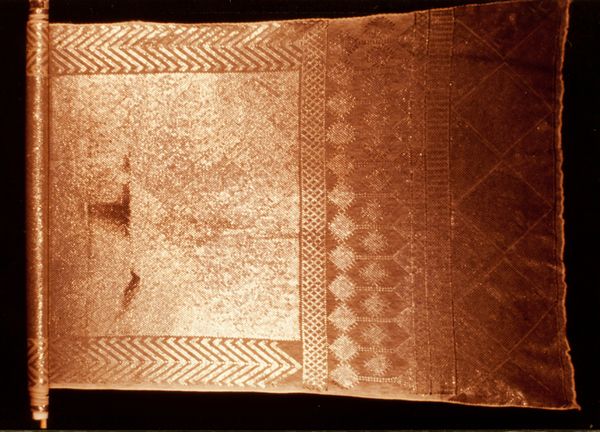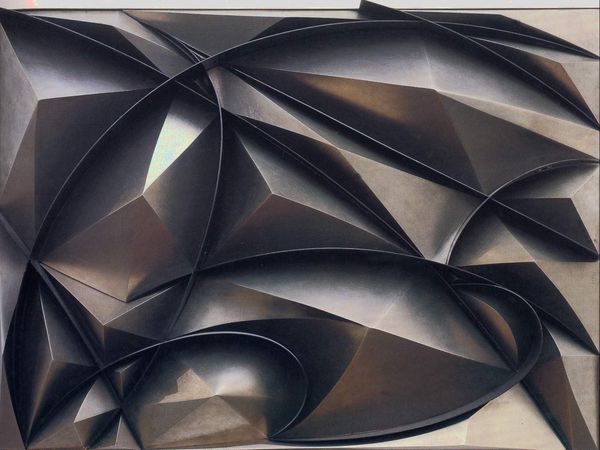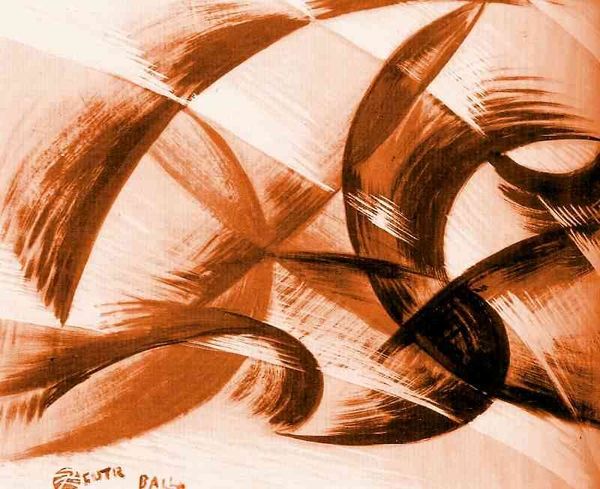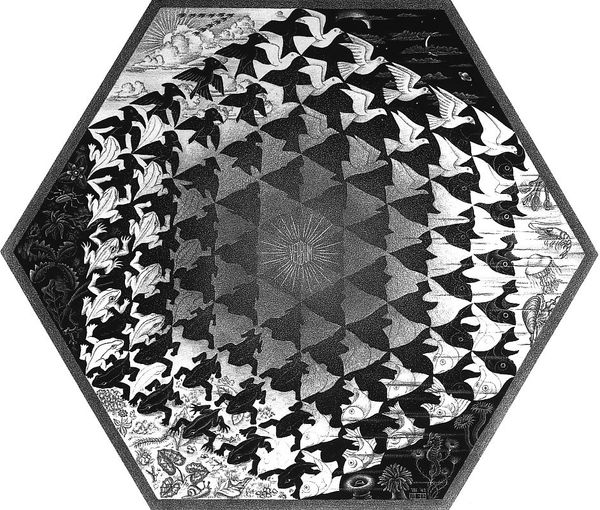
#
art-deco
#
kinetic-art
#
abstract pattern
#
organic pattern
#
geometric
#
abstraction
#
line
#
italian-renaissance
#
futurism
Copyright: Public domain US
Editor: So, this is Giacomo Balla’s "Black and White Futurist Forcefield," created around 1916. It’s such an intense abstract piece! All these geometric shapes make me feel like I’m looking into some sort of vortex. What do you see in this work? Curator: Well, considering its creation during World War I, this image speaks volumes about the Futurist movement's complex relationship with modernity and war. They were obsessed with speed, technology, and violence, viewing war as a cleansing force. Does the "forcefield" perhaps symbolize a dynamic defense or even the energy unleashed during conflict? How might that context affect your interpretation? Editor: That’s a fascinating perspective! I hadn't considered the direct connection to World War I, though now it seems obvious. Does the limited palette of blacks and whites, contribute to this martial interpretation in any way? Curator: Precisely! Restricting the palette simplifies the subject matter and creates an impression of force; you might ask, 'force of what exactly?' - force of industry, weapons? The abstraction almost certainly seeks to remove traditional narrative associations and make it about something beyond the purely aesthetic. Editor: It definitely shifts my thinking away from simply seeing shapes and more toward ideas of energy, dynamism, and even the disruptions of war. Curator: Exactly. So much of art history hinges on this contextual understanding. Consider the prevailing sentiments during the time. Appreciating the artist’s position relative to social and political occurrences opens another door for viewers. Editor: That's so helpful to consider. I'll certainly keep that in mind in my own work and in future studies of artworks. Thanks!
Comments
No comments
Be the first to comment and join the conversation on the ultimate creative platform.
